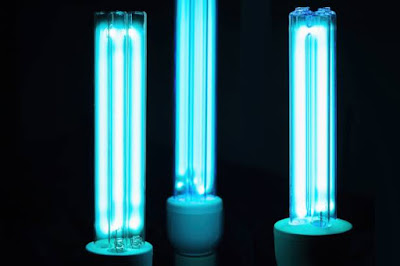Bright Ideas: Incorporating UV Lamps into Modern Living
 |
| UV Lamps |
Ultraviolet (UV) lamps have become increasingly common in both commercial and residential settings. From tanning beds to bug zappers, UV rays are now being harnessed for various applications. However, there is still a lot that the average person does not understand about these specialized lamps and the ultraviolet spectrum of light. This article aims to provide a comprehensive overview of UV lamps, their uses, and some important safety considerations.
Types of UV Lamps
There are different types of UV lamps that emit rays across the ultraviolet
spectrum:
UVA Lamps: UVA lamps emit long-wave ultraviolet rays between 320-400
nanometers. They are commonly found in tanning beds and are considered less
dangerous than shorter wavelengths. However, overexposure can still cause
damage.
UVB Lamps: UVB lamps emit mid-wave ultraviolet rays between 280-320 nanometers.
They are sometimes used therapeutically for certain skin conditions like
psoriasis under medical supervision. Prolonged UVB exposure increases melanoma
risk.
UVC Lamps: UVC lamps emit short-wave ultraviolet rays below 280 nanometers.
They are highly germicidal and often used in water treatment facilities as well
as for lab sterilization. UVC exposure can cause severe eye and skin burns.
Blacklight Lamps: Blacklight lamps, also known as BLB lamps, emit long-wave UV
Lamps rays around 365 nanometers. They cause certain materials like
fabric dyes, glow-in-the-dark objects to appear bright shades of blue, green or
purple. Used in nightclubs to enhance atmosphere.
Applications of UV Lamps
UV lamps have numerous commercial and household applications that leverage
their ability to kill bacteria and elicit photochemical reactions:
Disinfection - UVC lamps are commonly used for disinfecting air and surfaces in
hospitals, laboratories, and water treatment facilities by destroying microbes.
Their germicidal properties are helpful for sanitizing spaces.
Tanning - UVA tanning beds are a popular way for people to develop a tan
without sun exposure. The controlled dose prevents sunburn while stimulating
melanin production.
Insect Control - Many bug zappers and some modern mosquito traps contain UV
lamps that attract nocturnal insects which then get fatally electrocuted.
Special Effects - Long-wave UV is used in stage lighting to make outfits
shimmer or in photography to bring out details not visible to the naked eye.
This enhances the aesthetic appeal.
Food Safety - Packaged foods are irradiated with UV to destroy pathogens and
extend shelf-life. UVC treatment sterilizes canning lines to prevent
contamination.
Safety Concerns with UV Exposure
While UV technology provides useful applications, overexposure to UV radiation
presents serious health risks including:
Skin Damage - UV exposure, especially to UVB wavelengths, breaks down collagen
fibers and hastens skin aging. It increases the chances of developing skin
cancer like melanoma.
Eye Injury - Unprotected UV exposure can cause painful sunburns on delicate eye
tissues and increase the risk of cataracts and macular degeneration later in
life.
Immunosuppression - Over time, excessive UV exposure may reduce the
effectiveness of the immune system leaving one vulnerable to infections by
suppressing certain immune cells.
Photosensitivity Reactions - Some people are photosensitive and can develop
rashes or hives on the skin when it is exposed to UV combined with certain
substances like fragrances.
DNA Damage - At a cellular level, UV radiation interferes with DNA structure
and triggers mutations that can potentially turn normal cells cancerous if not
repaired properly.
UV Lamp Safety Precautions
Considering the harm UV rays pose in high intensities, it is important to take
precautions:
- Wear protective eyewear certified for UV radiation when using lamps or
devices that emit UV.
- Limit sunlamp exposure and do not sunbathe without proper sunblock applied
regularly.
- Do not look directly into operating UV lights and provide adequate shielding
where possible.
- Air out spaces disinfected with UV lights before re-entry and limit the time
of exposure.
- Seek medical advice before using UV sources to treat any skin conditions.
Avoid self-diagnosis and treatment.
- Monitor young children and pets who may not understand the dangers of UV
exposure from household sources.
Get More Insights on UV Lamps



Comments
Post a Comment